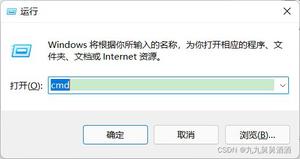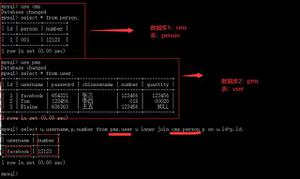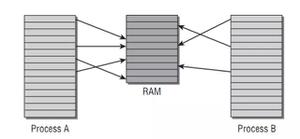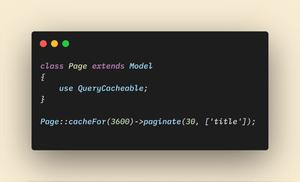LINUXGDBIDENTIFYMEMORYLEAKS(通过gdb脚本打印malloc和free) [数据库教程]

下面为一种方法查找memory leak,但在实际使用过程中由于打印太多会导致效率很低,不是很实用,而且有些地方报错 如 *(malloc+191)
原文地址https://www.ibm.com/support/pages/linux-gdb-identify-memory-leaks
Abstract
LINUX GDB: IDENTIFY MEMORY LEAKS
Body
This small article describe how to track memory leaks using ‘gdb‘ on Linux. If you are using products like ‘db2‘ or any other product that has it‘s own memory management routines then you should first track possible leaks at the product level using the tools it provides. For ‘db2‘ that would be ‘db2pd‘ for example. This article therefore applies only to memory leaks at the ‘malloc()‘ level, that is blocks of memory allocated using ‘malloc()‘ but never freed.
Remember that a debugger is very slow and might cause performance issues. If you can ‘overload‘ the default ‘malloc()/free()‘ routines via LD_PRELOAD or another way it would probably be faster and easier than using the debugger.
NOTE: The ‘gdb‘ script provided below can be modified as fits. Remember that
multiple things like ‘gdb‘ version, OS version, compilation options...
can end up providing slightly different results and therefore you should
consider this script more as a ‘basis‘ to work on rather than something
that will work 100% on all platforms for whatever executable.
If you are still reading this means you have no other choice but using the debugger. So let‘s first describe what we need to do.
- Everytime we enter ‘malloc()‘ we should ‘save‘ the memory allocation
requested size in a variable.
- Everytime we return from ‘malloc()‘ we should print the size and the
return address from ‘malloc()‘.
- Everytime we enter ‘free()‘ we should print the ‘pointer‘ we are
about to free.
Note that while the ‘size‘ is not needed it is good to have it because it might allow you to find some ‘pattern‘ in the list of allocated blocks. Since we don‘t want to have to manually interact with the debugger each time a memory allocation is made or freed we want to put command in s script that gdb will take as an argument and execute without any manual intervention
required. Now let‘s show what the script looks like and then we will show a typical output and explain a few things about the script.
== gdbcmd1 ==
set pagination off
set breakpoint pending on
set logging file gdbcmd1.out
set logging on
hbreak malloc
commands
set $mallocsize = (unsigned long long) $rdi
continue
end
hbreak *(malloc+191)
commands
printf "malloc(%lld) = 0x%016llx
", $mallocsize, $rax
continue
end
hbreak free
commands
printf "free(0x%016llx)
", (unsigned long long) $rdi
continue
end
continue
Then we attach a running process with the debugger using the script:
# gdb --command=gdbcmd1 server2 11543
The program will run and send the output to a file named ‘gdbcmd1.out‘. Because the file contains as well ‘gdb‘ messages, besides the ‘printf‘ we added to the script we can get a clearer output by doing this:
# grep -e "^malloc" -e "^free" gdbcmd1.out
We have something like this:
malloc(57) = 0x0000000012e1b260
free(0x0000000012e1b260)
malloc(57) = 0x0000000012e1b260
free(0x0000000012e1b260)
malloc(100) = 0x000000000e497d30
malloc(15) = 0x0000000011bda010
malloc(568) = 0x0000000011bda030
free(0x0000000000000000)
malloc(2248) = 0x0000000011bda270
free(0x0000000011bda030)
malloc(20) = 0x0000000011bda030
malloc(20) = 0x0000000011bda050
malloc(20) = 0x0000000011bda070
malloc(20) = 0x0000000011bda090
malloc(20) = 0x0000000011bda0b0
malloc(20) = 0x0000000011bda0d0
free(0x0000000011bda010)
malloc(15) = 0x0000000011bda010
free(0x0000000011bda010)
malloc(15) = 0x0000000011bda010
malloc(21) = 0x0000000011bda210
malloc(21) = 0x0000000011bda230
malloc(56) = 0x0000000011bdafe0
Once you have that you can parse the output to find out those blocks that are never freed. Later on you can add a ‘where‘ command in the commands for the entry in ‘malloc()‘ breakpoint to see where the allocation comes from. So you would for example replace this:
hbreak malloc
commands
set $mallocsize = (unsigned long long) $rdi
continue
end
By this:
hbreak malloc
commands
set $mallocsize = (unsigned long long) $rdi
where
continue
end
Now some words about the ‘gdb‘ script ‘gdmcmd1‘ itself:
set pagination off
- This prevents to have to press ‘return‘ each time the screen has been
filled up with messages. This can be seen as some ‘auto-scroll‘ option.
set breakpoint pending on
- In case the library containing the function would not yet be loaded
the debugger would wait for it before placing the breakpoint. In this
case of course it should already be loaded in the running process.
set logging file gdbcmd1.out
- Instruct ‘gdb‘ to save the output to a file named ‘gdbcmd1‘.
set logging on
- Instruct ‘gdb‘ to start sending output to ‘gdbcmd1‘.
hbreak malloc
commands
set $mallocsize = (unsigned long long) $rdi
continue
end
- Place a ‘hardware assisted‘ breakpoint on the entry of malloc. Save the
allocation requested size in a variable named ‘mallocsize‘. Note that on
X86 AMD the first argument to a function is in register ‘$rdi‘.
hbreak *(malloc+191)
commands
printf "malloc(%lld) = 0x%016llx
", $mallocsize, $rax
continue
end
- Place a ‘hardware assisted‘ breakpoint on the return from malloc.
Print the size as well as the pointer returned by malloc. Note that the
return value on X86 AMD is in register ‘$rax‘. See below for finding
the offset of the ‘return‘ instruction from malloc.
hbreak free
commands
printf "free(0x%016llx)
", (unsigned long long) $rdi
continue
end
continue
- Finding the ‘return‘ instruction offset from malloc -
We could use the ‘finish‘ instruction of ‘gdb‘ but in many cases it simply did not work as expected for me. So this way of doing it is an alternative. To find the return instruction offset in malloc you need to check the assembly for malloc (disas malloc in gdb) and locate the ‘retq‘ (64 bits) instruction. Then you take the address of that instruction and compute the offset starting from the first instruction in malloc. For example:
(gdb) disas malloc
Dump of assembler code for function malloc:
0x0000003f8a673fb0 <malloc+0>: mov %rbp,-0x10(%rsp)
0x0000003f8a673fb5 <malloc+5>: mov %rbx,-0x18(%rsp)
0x0000003f8a673fba <malloc+10>: mov %rdi,%rbp
0x0000003f8a673fbd <malloc+13>: mov %r12,-0x8(%rsp)
0x0000003f8a673fc2 <malloc+18>: sub $0x18,%rsp
0x0000003f8a673fc6 <malloc+22>: mov 0x2dbe53(%rip),%rax
0x0000003f8a673fcd <malloc+29>: mov (%rax),%rax
...
0x0000003f8a674055 <malloc+165>: mov 0x8(%rsp),%rbp
0x0000003f8a67405a <malloc+170>: mov 0x10(%rsp),%r12
0x0000003f8a67405f <malloc+175>: add $0x18,%rsp
0x0000003f8a674063 <malloc+179>: retq
0x0000003f8a674064 <malloc+180>: mov %rbx,%rdi
0x0000003f8a674067 <malloc+183>: mov %rbp,%rsi
0x0000003f8a67406a <malloc+186>: xor %r12d,%r12d
...
0x0000003f8a674063 - 0x0000003f8a673fb0 = 179
Once again you might have to play a bit with the script to obtain the results
you are after but this should give you a base to start on.
LINUX GDB: IDENTIFY MEMORY LEAKS(通过gdb脚本打印malloc和free)
以上是 LINUXGDBIDENTIFYMEMORYLEAKS(通过gdb脚本打印malloc和free) [数据库教程] 的全部内容, 来源链接: utcz.com/z/535272.html









